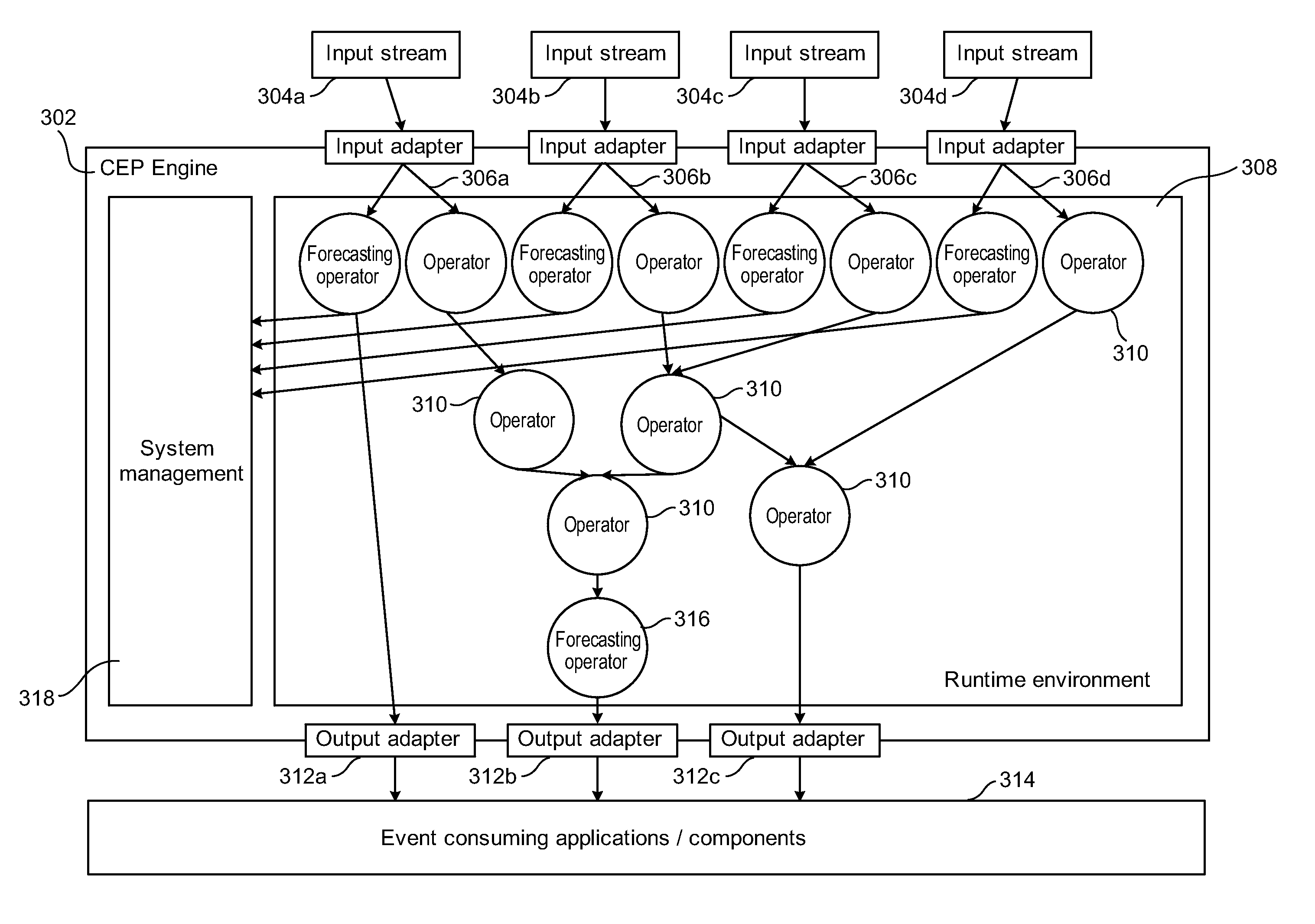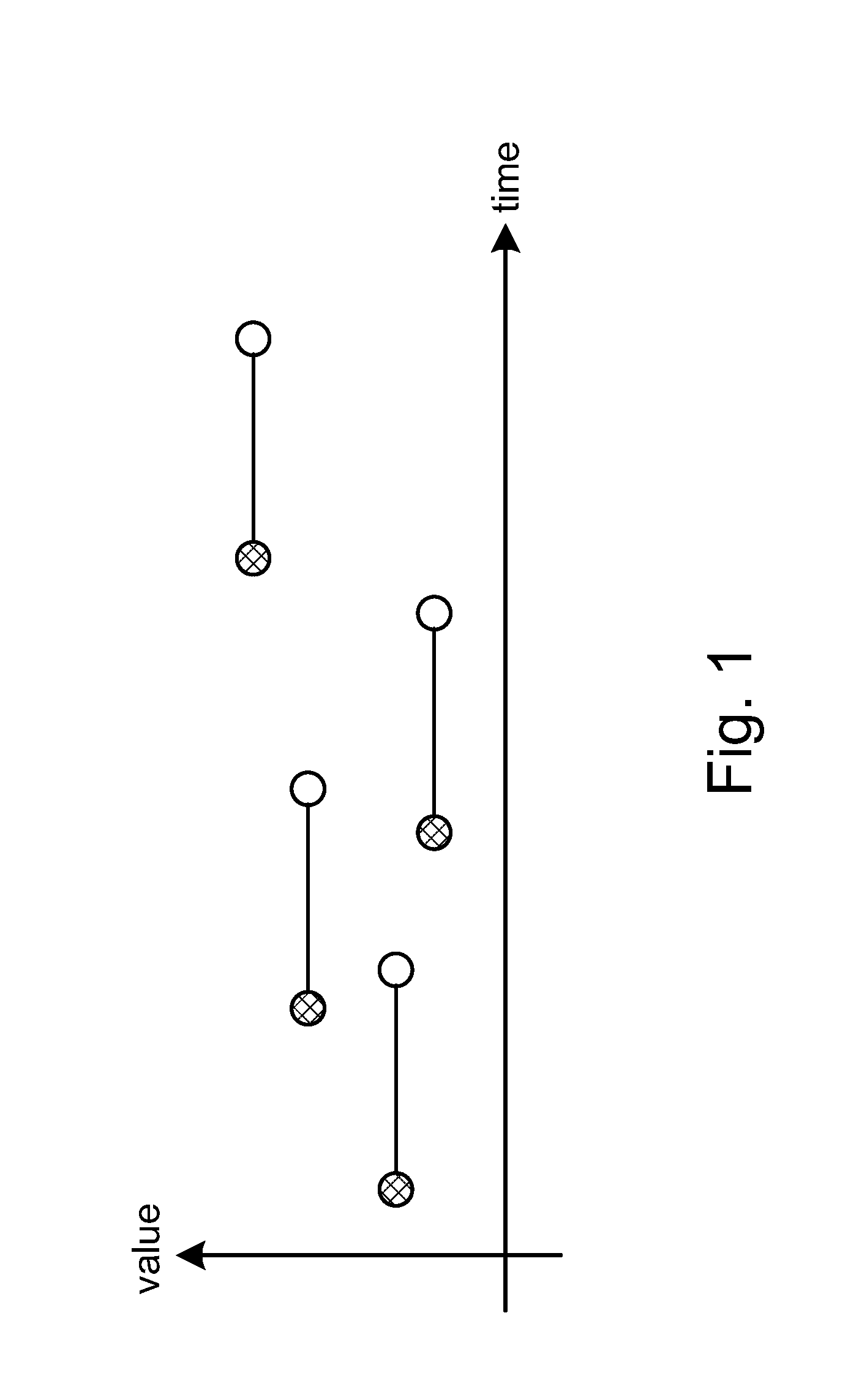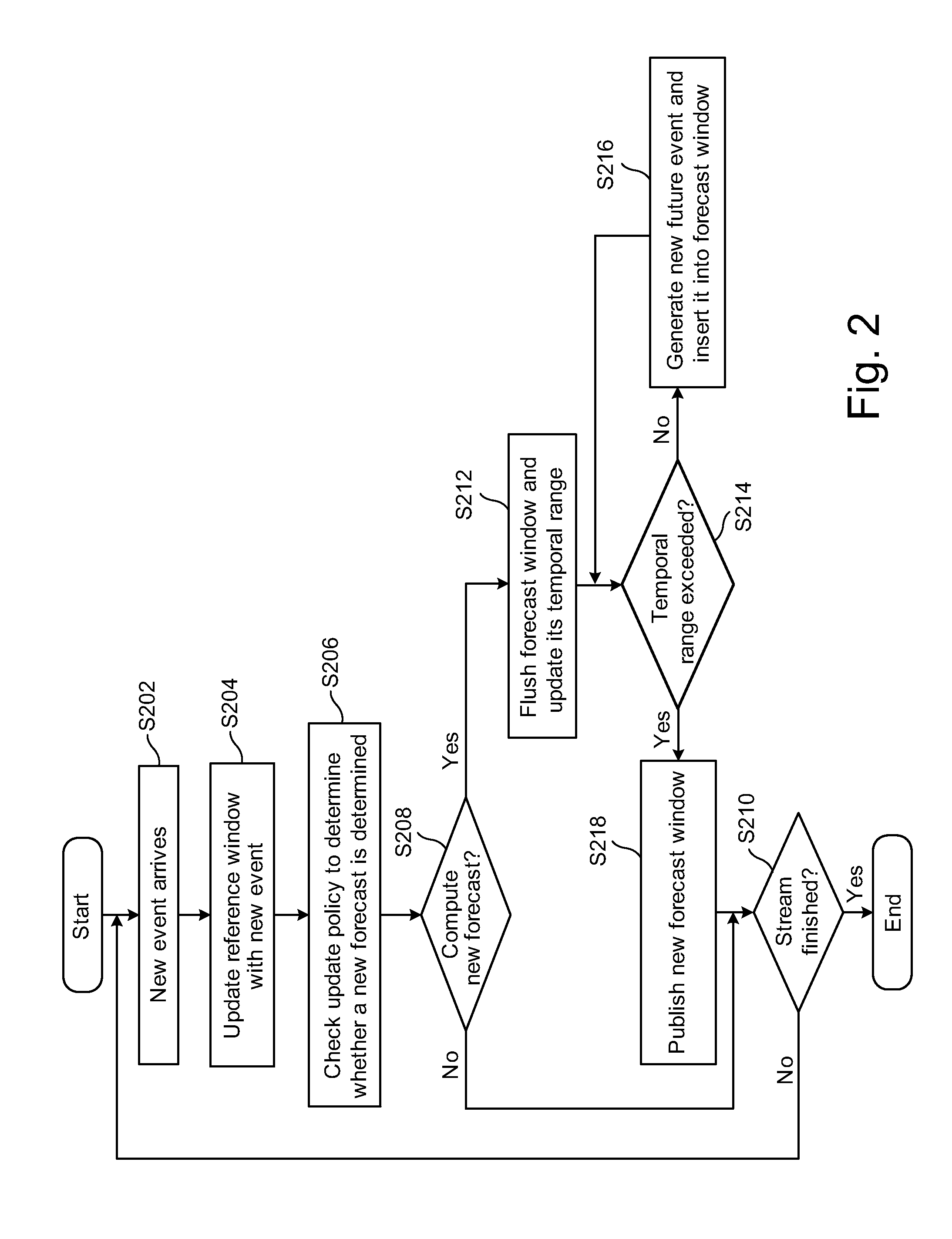Systems and/or methods for forecasting future behavior of event streams in complex event processing (CEP) environments
a technology of event streams and event processing, applied in the field of system and/or method for forecasting the future behavior of event streams in complex event processing (cep) environments, can solve the problems of system triggering internal, inability to predict the and inability to explicitly reserve the modeling forecasting functionality of sql standards, etc., to achieve the effect of improving the forecasting of future behavior of event streams
- Summary
- Abstract
- Description
- Claims
- Application Information
AI Technical Summary
Benefits of technology
Problems solved by technology
Method used
Image
Examples
Embodiment Construction
[0041]As is known, a CEP system processes and analyzes high volumes of event streams. An event stream generally may be thought of as a continuously increasing sequence of events. These events may be thought of as including, for example, a data portion and a temporal component stating when the event occurred (e.g., an order for a car has been filed at 10 pm or a physical measurement has been taken at a certain point in time). Different temporal representations of events exist using, for example, a single timestamp, a time interval, a positive-negative declaration for a single timestamp, etc.
[0042]The forecasting techniques of certain example embodiments may receive those events and continuously maintain a temporal window of events. The size of this window (e.g., the last hour or the last 10 events, etc.) may be a configurable parameter of the underlying algorithm. The forecasting time window (or the time window for which the events are to be forecasted) also may be parameterized in c...
PUM
 Login to View More
Login to View More Abstract
Description
Claims
Application Information
 Login to View More
Login to View More - R&D
- Intellectual Property
- Life Sciences
- Materials
- Tech Scout
- Unparalleled Data Quality
- Higher Quality Content
- 60% Fewer Hallucinations
Browse by: Latest US Patents, China's latest patents, Technical Efficacy Thesaurus, Application Domain, Technology Topic, Popular Technical Reports.
© 2025 PatSnap. All rights reserved.Legal|Privacy policy|Modern Slavery Act Transparency Statement|Sitemap|About US| Contact US: help@patsnap.com



